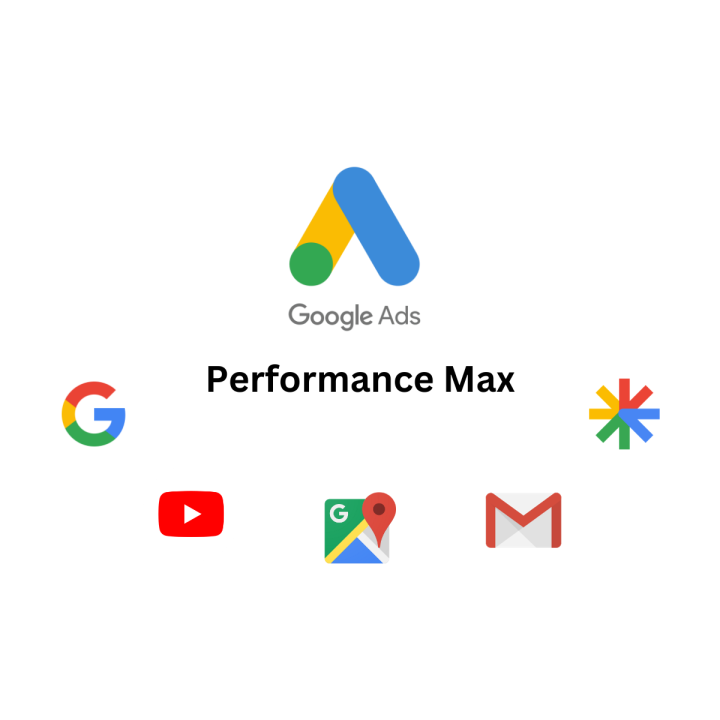
Introduction to Google Ads for Lead Generation
Google Ads is a powerful online advertising platform that enables businesses to promote their products and services through targeted ads. As a fundamental component of modern marketing strategies, it allows for effective lead generation by harnessing the vast reach and user intent inherent in Google’s search engine. When potential customers search for relevant keywords, businesses can display their ads, effectively capturing the interest of users at various stages of the buying journey.
One of the primary models of advertising within Google Ads is pay-per-click (PPC) advertising. This model not only allows businesses to control their advertising spend but also provides insights into which campaigns are yielding the best results. When a user clicks on an ad, the business is charged a predetermined amount, which can result in a higher return on investment when implemented thoughtfully. PPC advertising is especially beneficial for lead generation, as it offers immediate visibility to businesses, in contrast to organic search methods that require time and effort to achieve results.
Moreover, Google Ads offers a range of targeting options that facilitate precise audience segmentation. Advertisers can target specific demographics, locations, and even interests, ensuring that the message reaches the most relevant potential customers. This level of targeting enables businesses to tailor their advertising campaigns to specific segments of the market, improving the likelihood of converting clicks into leads. By leveraging the comprehensive features of Google Ads, businesses can enhance their lead generation efforts, ultimately driving sales and fostering growth.
Understanding Your Target Audience
Identifying and understanding your target audience is a fundamental step in generating leads through Google Ads campaigns. Crafting effective advertisements that resonate with potential clients necessitates a well-developed comprehension of who they are. One effective method for achieving this is by creating detailed buyer personas. These personas are semi-fictional representations of your ideal customers based on market research and real data about your existing customers. By defining these personas, you can hone in on the specific attributes, needs, and preferences of your potential leads.
In addition to developing buyer personas, conducting thorough market research is critical. This research can inform not only your understanding of your audience but can also unveil pertinent trends in their behavior and preferences. Utilizing tools such as surveys, interviews, and focus groups will allow you to gather qualitative data, which can be invaluable in defining customer segments. Furthermore, exploring competitor strategies through analysis of their customer engagement can provide insights into what your target audience may be seeking.
Analyzing customer behavior is equally essential for effective lead generation. Numerous analytics platforms, including Google Analytics, can track user interactions on your website and reveal pertinent demographic information, such as age, gender, and geographical location. By interpreting these data points, you can identify the interests and behaviors of potential leads, allowing you to refine your ads to match their preferences and motivations. Ultimately, understanding your target audience ensures that your Google Ads campaigns are positioned to reach the right individuals, thereby enhancing the probability of lead generation.
Setting Up Your Google Ads Account
Establishing a Google Ads account lays the groundwork for a successful lead generation strategy. To begin, visit the Google Ads website and select “Start Now.” You will need to sign in with your existing Google account or create a new one. After setting up your account, navigate to the campaign dashboard to create your first campaign.
When creating a campaign, it is crucial to choose the right objective that aligns with your lead generation goals. For example, if your aim is to generate leads, select “Leads” as your campaign goal. This will guide Google in optimizing your ads for interested users. You can choose between various campaign types, such as Search, Display, or Video, depending on where you believe your target audience is most likely to engage.
Next, defining your budget is a critical component. Determine a daily budget that fits your financial plan while enabling effective lead outreach. Google Ads operates on a bidding system; therefore, understanding the cost per lead in your industry can help set realistic financial expectations. Adjust your bidding strategy to maximize your budget efficiently—options include Manual CPC or Target CPA.
Additionally, it is vital to select appropriate ad formats. Text ads are commonly used in Search campaigns, while Display ads may be more effective for brand awareness. Ensure your ad copy is clear, concise, and tailored to your audience, highlighting what makes your offer compelling.
Lastly, setting up tracking and conversion goals is indispensable in this foundational setup. By incorporating Google Analytics, you can monitor how users interact with your website after clicking your ads. Defining specific conversion actions, such as form submissions or downloads, allows you to measure the success of your campaigns accurately. This data will inform decisions and adjustments in your future advertising efforts, as it highlights areas that require optimization for enhanced lead generation.

Crafting Compelling Ad Copy
Creating compelling ad copy is critical for a successful Google Ads campaign, as it directly affects click-through rates and conversions. Effective ad messaging comprises several essential elements, including attention-grabbing headlines, concise descriptions, and persuasive calls-to-action (CTAs). The headline serves as the first point of contact with potential customers; thus, it should be compelling and relevant to the target audience. Utilizing strong action verbs and including keywords related to your product or service can enhance visibility and engagement.
Equally important is the description, which provides additional context to the headline. This section should succinctly convey the value proposition of your offering. Highlighting unique selling points (USPs) can differentiate your ad from competitors. Incorporating relevant keywords naturally helps in improving your ad’s quality score, resulting in better positioning within search results. A clear and engaging description can encourage users to click and learn more.
Incorporating persuasive calls-to-action (CTAs) is vital in guiding users towards the desired action, be it signing up, making a purchase, or visiting a website. CTAs should be direct and encourage immediate action, using phrases such as “Get Started Today” or “Claim Your Free Trial Now.” Testing different variations of these CTAs can provide insights into which messages resonate most with your audience.
To continually improve performance, A/B testing variations of your ad copy is essential. By systematically changing headlines, descriptions, and CTAs, you can assess which combinations yield the highest engagement and conversion rates. This iterative process allows for data-driven decisions that refine your advertising strategy over time. Monitoring key metrics, such as click-through rates and conversion rates, enables adjustments that enhance overall ad effectiveness, driving more quality leads through your Google Ads campaigns.
Utilizing Keywords Effectively
Keywords are a fundamental element in generating leads through Google Ads campaigns. Conducting thorough keyword research allows businesses to identify terms and phrases that resonate with their target audience. This process begins by understanding the offerings of the business and aligning them with the search intent of potential customers. Tools such as Google Keyword Planner, SEMrush, and Ahrefs can assist marketers in uncovering relevant keywords and analyzing their search volumes, competition levels, and trends. By leveraging these resources, businesses can gain valuable insights into how users search for products or services, thus enhancing their ad targeting capabilities.
Once an array of potential keywords is assembled, it becomes essential to categorize them strategically into ad groups. Organizing keywords into focused groups allows for the creation of targeted ads that address specific search queries. For example, if a business sells both athletic shoes and formal footwear, it would be prudent to create separate ad groups for each category. This segmentation not only improves the relevance of the ads displayed to users but also aids in tracking performance metrics effectively, enabling businesses to optimize their campaigns accordingly.
In addition to selecting positive keywords, marketers should also give consideration to negative keywords. Negative keywords are terms for which advertisers do not want their ads to appear, effectively refining the targeting process. For instance, if a business offers premium services, it might want to exclude terms like “cheap” or “discount.” This practice helps in minimizing irrelevant traffic, thereby enhancing cost efficiency and ensuring that the leads generated are more likely to convert into loyal customers.
By adopting an effective keyword strategy, businesses can significantly enhance the performance of their Google Ads campaigns, driving highly relevant traffic that aligns with their marketing goals.
Creating Targeted Campaigns
In the competitive landscape of digital marketing, Google Ads provides various campaign types tailored to diverse objectives. The primary types of campaigns include search, display, and remarketing campaigns, each serving distinct purposes in lead generation strategies.
Search campaigns are perhaps the most common form utilized by marketers, allowing ads to appear on Google’s search engine results when users search for relevant terms. This type of campaign is particularly effective for generating leads, as it targets users who are actively seeking particular products or services. To enhance effectiveness, it is crucial to utilize thorough keyword research to discover the terms prospective leads are using, thereby refining ad relevance and increasing the likelihood of conversions.
Display campaigns, in contrast, utilize Google’s vast network of partner websites to showcase ads visually. These campaigns are beneficial for brand awareness but can also be designed for lead generation. Effective targeting is essential in display campaigns; by segmenting audiences according to demographics, interests, and online behavior, marketers can deliver tailored content that resonates with potential leads.
Remarketing campaigns aim to reconnect with users who have previously interacted with a website but have not converted. These campaigns utilize cookies to show targeted ads to these users as they browse other sites within Google’s network. Remarketing is a powerful tool for lead generation, as it nurtures potential customers by keeping offerings top-of-mind and providing tailored messages that reflect their previous interactions.
To maximize the effectiveness of these campaigns, segmentation based on audience characteristics and lead generation goals is essential. By precisely defining target audiences and associating relevant messaging with each segment, advertisers can significantly enhance engagement and drive more qualified leads through their Google Ads campaigns.
Optimizing Landing Pages for Conversions
Landing pages play a crucial role in lead generation through Google Ads campaigns. Once a potential customer clicks on an ad, the landing page serves as the critical point where conversions can either succeed or fail. Thus, ensuring that landing pages are adequately optimized is essential for maximizing conversion rates and effectively turning visitors into leads.
To design high-converting landing pages, several best practices must be followed. First and foremost, user experience (UX) is paramount. The page should load quickly, be mobile-friendly, and have intuitive navigation. This allows visitors to find the information they are seeking without frustration, ultimately fostering a smoother transition toward taking action.
Equally important are the visual elements of the landing page. Engaging images or videos can capture attention and express brand identity effectively. However, these visuals should complement the text and not distract from the primary message. Consistency in color schemes, fonts, and structure enhances overall aesthetic appeal, allowing users to focus on the call to action (CTA).
Strong, compelling CTAs are vital for directing users towards conversion. CTAs should be prominently placed on the landing page and written in action-oriented language that prompts immediate engagement. Placement of buttons and links must be strategic, ensuring that they are visible without overwhelming the visitor with too many options.
Furthermore, implementing A/B testing can help identify which elements of the landing page resonate most with your audience. By analyzing performance metrics, marketers can refine their landing pages based on actual user behaviors, ensuring that the final version is the most effective in converting visitors into leads. This iterative process allows continuous improvement and adaptation, ultimately leading to better results in Google Ads campaigns.

Monitoring and Analyzing Campaign Performance
Effective monitoring and analyzing of Google Ads campaign performance is crucial for driving successful outcomes and optimizing advertising efforts. By tracking key performance metrics, advertisers can gain valuable insights into their campaigns and make informed decisions that enhance lead generation efforts. Primary metrics to focus on include click-through rates (CTR), conversion rates, and return on ad spend (ROAS). Each of these metrics plays a significant role in assessing how well your ads are performing and their overall effectiveness in generating leads.
Click-through rates (CTR) gauge the percentage of users who click on your ad after seeing it. A high CTR typically indicates that your ad is compelling and relevant to your target audience, suggesting that you may want to increase your budget for that particular campaign. Conversely, a low CTR may point to a need for re-evaluating your ad copy or targeting parameters. Monitoring this metric regularly allows advertisers to stay attuned to the engagement levels of their audience.
Conversion rates are equally vital in determining the success of Google Ads campaigns. This metric reflects the percentage of users who complete a desired action—such as filling out a lead form or making a purchase—after clicking on an ad. A high conversion rate signifies that not only is the ad attracting clicks but also effectively persuading users to take the next step in the buyer’s journey. If conversion rates are subpar, it may be necessary to revise landing page content or adjust the call-to-action strategy.
Return on ad spend (ROAS) is a critical financial metric that evaluates the revenue generated for every dollar spent on advertising. A favorable ROAS indicates that your campaigns are yielding profit and justifies further investment in advertising. For a comprehensive understanding of these metrics, leveraging tools such as Google Analytics and Google Ads reporting will provide actionable insights that can guide strategic adjustments to enhance overall performance. By continuously tracking these key indicators, advertisers can fine-tune their strategies to effectively generate leads and maximize returns.
Tips for Continuous Improvement
Continuous improvement is vital for the success of Google Ads campaigns aimed at lead generation. To enhance performance and boost conversion rates, advertisers must adopt a systematic approach to analyzing results and making necessary adjustments. Regular analysis of campaign data helps to identify what is working and what is not, enabling marketers to fine-tune their strategies. Utilize Google Ads’ reporting tools to track key metrics such as click-through rates (CTR), conversion rates, and cost per acquisition (CPA). Understanding these metrics provides valuable insights into the effectiveness of your campaigns.
Refining audience targeting is another critical aspect of improving Google Ads campaigns. By leveraging the targeting options available, such as demographics, interests, and behaviors, advertisers can reach a more specific audience that is more likely to convert. Consider conducting A/B testing with different audience segments to determine which groups respond best to your ads. This data allows marketers to focus their resources on high-performing segments, ultimately driving better lead generation results.
Revising ad copy and keywords is essential to maintain relevance and engage potential leads. Regularly review your ad text to ensure it aligns with current trends and resonates with your audience. Experiment with different headlines and calls-to-action to see which combinations yield the best response. Additionally, keeping your keyword list up-to-date and relevant can prevent ad fatigue and improve your Quality Score, resulting in better ad placements and lower costs.
Lastly, staying informed about the latest Google Ads features and changes in advertising trends is imperative. Digital marketing is an ever-evolving landscape, and adapting to new developments can provide a competitive advantage. Participate in webinars, read industry news, and follow marketing thought leaders to remain updated on best practices that can enhance your campaign’s performance. Implementing these tips for continuous improvement will help ensure that your Google Ads campaigns not only maintain their effectiveness but also evolve to meet market demands.




